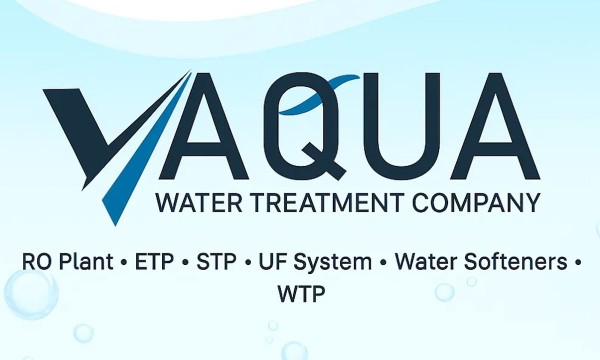V Aqua Water Treatment Company: Redefining Water Purity with Many Years of Innovation and Excellence – Digital Journal

Report on V AQUA WATER TREATMENT COMPANY’s Contribution to Water Management and Sustainable Development in India
Introduction
V AQUA WATER TREATMENT COMPANY, a manufacturing division of RO Service Point (ROSP), is a key contributor to India’s water purification and wastewater management sector. With over two decades of operational experience, the company provides integrated water treatment solutions for residential, commercial, and industrial applications. This report analyzes the company’s operations, technological offerings, and its significant alignment with the United Nations Sustainable Development Goals (SDGs).
Alignment with Sustainable Development Goals (SDGs)
V AQUA’s core business model is intrinsically linked to advancing environmental sustainability, with its products and services directly supporting several key SDGs. The company’s focus on water reuse, waste minimization, and resource efficiency demonstrates a strong commitment to global sustainability targets.
- SDG 6: Clean Water and Sanitation: The company’s primary contribution is towards this goal. By manufacturing and installing Reverse Osmosis (RO) plants, V AQUA directly supports Target 6.1 (achieve universal and equitable access to safe and affordable drinking water). Furthermore, its Effluent Treatment Plants (ETP) and Sewage Treatment Plants (STP) are critical for achieving Target 6.3 (improve water quality by reducing pollution and treating wastewater).
- SDG 9: Industry, Innovation, and Infrastructure: V AQUA provides essential infrastructure for sustainable industrialization. Its industrial softeners, filtration units, and De-Mineralization (DM) plants enhance manufacturing efficiency and equipment longevity, contributing to Target 9.4 (upgrade infrastructure and retrofit industries to make them sustainable, with increased resource-use efficiency).
- SDG 11: Sustainable Cities and Communities: Through the deployment of compact STPs in residential complexes, hotels, and institutions, the company aids in the sustainable management of urban wastewater. This promotes water reuse for non-potable applications, aligning with Target 11.6 (reduce the adverse per capita environmental impact of cities, including by paying special attention to air quality and municipal and other waste management).
- SDG 12: Responsible Consumption and Production: The company’s emphasis on resource-efficient solutions and water reuse promotes sustainable production patterns. ETP and STP systems enable industries and communities to manage water resources responsibly, supporting Target 12.2 (achieve the sustainable management and efficient use of natural resources).
Core Technological Solutions and Applications
V AQUA offers a comprehensive portfolio of water and wastewater treatment systems designed to address diverse water quality challenges while supporting sustainability objectives.
- Reverse Osmosis (RO) Plants: Engineered to remove impurities and provide safe drinking water for communities and industries, directly advancing SDG 6. Systems are available in capacities from 1000 LPH to 14000 LPH.
- Water Softeners: Domestic and industrial systems utilize ion-exchange technology to mitigate hard water problems, thereby protecting infrastructure and supporting the industrial efficiency goals of SDG 9.
- De-Mineralization (DM) Plants: These systems produce ultra-pure water required for specialized sectors like pharmaceuticals and laboratories, fostering innovation and sustainable industrial growth (SDG 9).
- Effluent Treatment Plants (ETP): Custom-designed ETPs help industries comply with environmental regulations by treating industrial wastewater, which is a critical component of achieving water quality targets under SDG 6.
- Sewage Treatment Plants (STP): Compact STPs treat municipal sewage for safe disposal or reuse in non-potable applications, contributing to water conservation and the development of sustainable communities (SDG 6 and SDG 11).
Operational Scope and Sustainability Focus
V AQUA’s operational model encompasses system design, engineering, installation, and maintenance, ensuring end-to-end quality control. The company prioritizes the integration of energy-efficient and automated technologies to minimize the environmental footprint of its solutions. The nationwide service network, managed by RO Service Point (ROSP), ensures long-term system performance and reliability.
The company’s overarching sustainability approach is centered on promoting a circular economy for water. By enabling water reuse and implementing waste-minimization processes, V AQUA actively supports conservation objectives across all sectors it serves, reinforcing its commitment to the Sustainable Development Goals.
Analysis of Sustainable Development Goals (SDGs) in the Article
1. Which SDGs are addressed or connected to the issues highlighted in the article?
The article discusses the work of V AQUA WATER TREATMENT COMPANY, which focuses on water purification and wastewater management. Based on the services and solutions described, the following SDGs are directly addressed or connected:
- SDG 6: Clean Water and Sanitation: This is the primary goal addressed. The company’s entire business model revolves around providing clean water (through RO plants and softeners) and managing wastewater (through ETPs and STPs), which are central to this SDG.
- SDG 9: Industry, Innovation, and Infrastructure: The article highlights the provision of advanced water treatment solutions for industrial sectors, such as manufacturing, food processing, and pharmaceuticals. This supports the development of sustainable and resilient infrastructure by upgrading industries with clean and environmentally sound technologies.
- SDG 11: Sustainable Cities and Communities: By providing Sewage Treatment Plants (STPs) for residential complexes, hotels, and institutions, the company contributes to improving waste management within urban and community environments, reducing the environmental impact of cities.
- SDG 12: Responsible Consumption and Production: The company’s focus on “water reuse, waste-minimization processes, and resource-efficient solutions” promotes sustainable management and efficient use of water, a critical natural resource. Treating industrial effluent also ensures the environmentally sound management of waste.
2. What specific targets under those SDGs can be identified based on the article’s content?
Several specific SDG targets can be linked to the company’s activities as described in the article:
- Target 6.1: Achieve universal and equitable access to safe and affordable drinking water for all.
- The article mentions providing RO Plants and Domestic Water Softeners for “residential, commercial, and industrial sectors,” including “healthcare, education, manufacturing, and food processing.” This directly contributes to making safe and purified water accessible to diverse populations and institutions.
- Target 6.3: Improve water quality by reducing pollution… halving the proportion of untreated wastewater and substantially increasing recycling and safe reuse.
- The company designs and installs Effluent Treatment Plants (ETP) and Sewage Treatment Plants (STP). The article explicitly states STPs treat “wastewater for non-potable reuse,” and ETPs ensure “compliance with regulatory bodies,” which directly addresses the goal of treating wastewater and promoting reuse to improve overall water quality.
- Target 6.4: Substantially increase water-use efficiency across all sectors.
- The company’s stated “Sustainability Approach” focuses on “water reuse, waste-minimization processes, and resource-efficient solutions to support conservation objectives across industries.” This aligns with improving water-use efficiency, particularly in the industrial sector.
- Target 9.4: Upgrade infrastructure and retrofit industries to make them sustainable… with greater adoption of clean and environmentally sound technologies.
- V AQUA provides “Industrial Softeners & Filtration Units,” “DM (De-Mineralization) Plants,” and ETPs for high-volume industrial applications. The article also notes an investment in “new-generation technologies, including automation and digital monitoring solutions, aligned with energy-efficient and sustainable practices,” which directly supports the retrofitting of industries with sustainable technology.
- Target 11.6: Reduce the adverse per capita environmental impact of cities, including by paying special attention to… municipal and other waste management.
- The provision of STPs for “residential complexes, hotels, and institutions” is a direct contribution to managing municipal wastewater at a local level, thereby reducing the environmental footprint of these urban communities.
- Target 12.4: Achieve the environmentally sound management of chemicals and all wastes… and significantly reduce their release to… water and soil.
- The custom-designed ETPs that help industries comply with regulatory bodies like CPCB and SPCB are a mechanism for the environmentally sound management of industrial wastewater (waste), preventing the release of untreated pollutants into water bodies.
3. Are there any indicators mentioned or implied in the article that can be used to measure progress towards the identified targets?
Yes, the article mentions or implies several indicators that can be used to measure progress:
- For Target 6.3 (Wastewater Treatment): A direct indicator is “compliance with regulatory bodies such as CPCB and SPCB.” Achieving these standards is a measurable outcome of improved wastewater treatment. The implementation of systems for “non-potable reuse” is another indicator of progress in water recycling.
- For Target 6.1 (Access to Clean Water): The capacity of the RO plants, mentioned as “1000 LPH to 14000 LPH,” serves as a quantitative indicator of the volume of clean water being produced. The number of installations across “residential communities, commercial facilities, public institutions, hotels, hospitals, and industrial environments” is an indicator of the reach and access provided.
- For Target 9.4 (Sustainable Industry): The adoption of “new-generation technologies, including automation and digital monitoring solutions” by industrial clients is a clear indicator of technological upgrading. The number of industries equipped with ETPs, DM Plants, and other resource-efficient systems also serves as a measure.
- For Target 12.4 (Waste Management): The number of ETPs and STPs installed and operational is a primary indicator. The volume of effluent and sewage treated by these plants would be a more precise metric for measuring the reduction in pollutant release.
4. Table of SDGs, Targets, and Indicators
| SDGs | Targets | Indicators Identified in the Article |
|---|---|---|
| SDG 6: Clean Water and Sanitation | 6.1: Achieve universal and equitable access to safe and affordable drinking water for all. | – Number of RO plants and water softeners installed in residential, commercial, and institutional settings. – Capacity of RO plants (e.g., 1000 LPH to 14000 LPH). |
| SDG 6: Clean Water and Sanitation | 6.3: Improve water quality by reducing pollution, halving the proportion of untreated wastewater, and increasing recycling and safe reuse. | – Number of Effluent Treatment Plants (ETP) and Sewage Treatment Plants (STP) installed. – Percentage of wastewater treated for non-potable reuse. – Compliance with CPCB and SPCB wastewater treatment standards. |
| 6.4: Substantially increase water-use efficiency across all sectors. | – Implementation of water reuse and resource-efficient solutions in industries. | |
| SDG 9: Industry, Innovation, and Infrastructure | 9.4: Upgrade infrastructure and retrofit industries to make them sustainable with clean and environmentally sound technologies. | – Number of industrial ETPs, DM plants, and filtration units installed. – Adoption of automation and digital monitoring solutions in water treatment systems. |
| SDG 11: Sustainable Cities and Communities | 11.6: Reduce the adverse per capita environmental impact of cities, including… municipal and other waste management. | – Number of STPs installed in residential complexes, hotels, and institutions. |
| SDG 12: Responsible Consumption and Production | 12.4: Achieve the environmentally sound management of chemicals and all wastes… and significantly reduce their release to water. | – Number of industrial clients achieving compliance with CPCB and SPCB regulations through ETPs. |
Source: digitaljournal.com
What is Your Reaction?
 Like
1
Like
1
 Dislike
0
Dislike
0
 Love
0
Love
0
 Funny
0
Funny
0
 Angry
0
Angry
0
 Sad
0
Sad
0
 Wow
0
Wow
0
















































/environment-climate-change-and-health-(ech)/water-sanitation-hygiene-and-health-(wsh)/landfill-tuvalu-36092.tmb-1200v.jpg?sfvrsn=5c21fe40_1#)

.jpg.webp?itok=0ZsAnae9#)


























